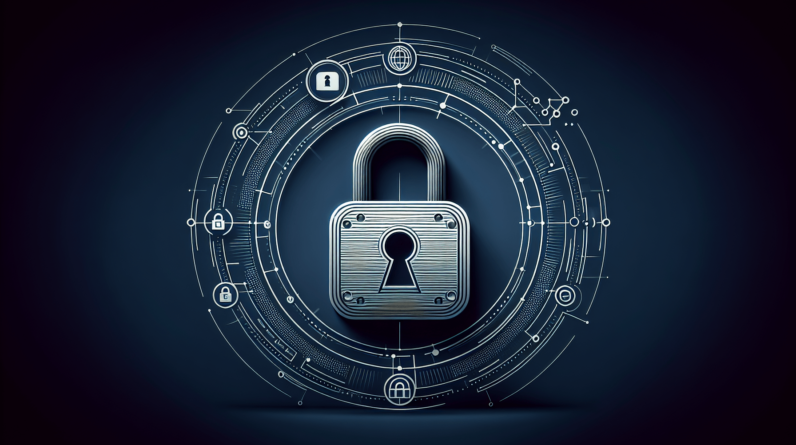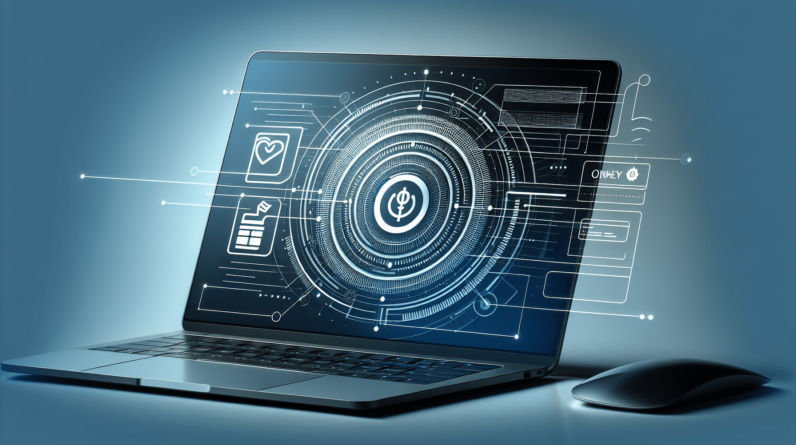Have you ever wondered how System IO works? If you’ve ever been curious about what happens behind the scenes of your computer’s file input and output operations, you’re in the right place. In this article, we’ll take a closer look at the inner workings of System IO and explore how it enables data transfer between your computer and its external storage devices. So, let’s dive right in and unravel the mystery of System IO together!
Overview of System IO
Definition of System IO
System IO, also known as Input/Output, refers to the communication between a computer system and the outside world. It involves the exchange of data and information between the computer and various input and output devices. System IO enables users to interact with the computer system by providing input instructions and receiving output results.
Purpose of System IO
The purpose of System IO is to facilitate communication and data transfer between the computer system and its external environment. It allows users to input data, commands, and instructions into the computer, and receive output in the form of processed information, images, sounds, or any other desired output format. System IO serves as a crucial interface that connects the user to the computer system and enables the system to interact with the real world.
Importance of System IO in Computing
System IO plays a vital role in computing as it enables the computer system to interact with the external world and process data. It allows users to input data and commands, which are necessary for the functioning and operation of the computer system. Additionally, System IO is responsible for providing output results and feedback to users, making it an integral part of the user experience. Without System IO, computers would be unable to receive input or provide output, rendering them useless for practical purposes.
Components of System IO
Input Devices
Input devices are used to input data, commands, and instructions into the computer system. These devices allow users to interact with the computer and provide input that can be processed and utilized by the system. Examples of input devices include keyboards, mice, touchscreens, scanners, and microphones.
Output Devices
Output devices are responsible for presenting the processed data, information, or results to the user in a comprehensible format. They display visual output, produce sound, or provide any other form of output according to the needs of the user. Common examples of output devices include monitors, printers, speakers, projectors, and headphones.
Storage Devices
Storage devices are used to store and retrieve data, programs, and files in the computer system. They provide long-term storage capabilities and play a crucial role in saving and accessing information. Examples of storage devices include hard disk drives (HDDs), solid-state drives (SSDs), USB flash drives, optical drives, and cloud storage solutions.
Input Devices
Definition of Input Devices
Input devices are hardware peripherals used to facilitate the entry of data and commands into a computer system. They allow users to provide input, such as text, numbers, gestures, or voice, which can be processed by the computer.
Types of Input Devices
There are various types of input devices that cater to different input methods and user preferences. Some common types of input devices include keyboards, mice, touchscreens, scanners, joysticks, gamepads, digital pens, and microphones.
Examples of Input Devices
- Keyboards: Keyboards are one of the most common input devices that allow users to input text and commands through the use of keys.
- Mice: Mice provide a pointing and clicking mechanism, allowing users to navigate and interact with graphical user interfaces (GUIs) easily.
- Touchscreens: Touchscreens enable direct interaction by detecting and translating touch gestures into input commands.
- Scanners: Scanners digitize physical documents, images, or objects and convert them into a digital format that can be inputted into a computer.
- Microphones: Microphones capture audio input, allowing users to provide commands or transcribe voice to text.
Output Devices
Definition of Output Devices
Output devices are hardware peripherals that display or present the processed data, information, or results from a computer system. They translate electronic signals into a comprehensible format for users.
Types of Output Devices
There are various types of output devices designed to cater to different sensory modalities and user needs. Common types of output devices include monitors, printers, speakers, projectors, and headphones.
Examples of Output Devices
- Monitors: Monitors display visual output in the form of text, images, videos, or any other graphical representation.
- Printers: Printers produce hard copies of digital information, such as documents, images, or spreadsheets.
- Speakers: Speakers output audio signals, enabling users to hear sounds, music, or any other auditory output.
- Projectors: Projectors display large-scale visual output by projecting images or videos onto a screen or surface.
- Headphones: Headphones provide a personal audio output experience, allowing users to listen to audio privately.
Storage Devices
Definition of Storage Devices
Storage devices are hardware components or systems used to store and retrieve data, programs, and files in a computer system. They provide both short-term and long-term storage capabilities.
Types of Storage Devices
There are several types of storage devices available, each with its own characteristics and use cases. Common storage devices include hard disk drives (HDDs), solid-state drives (SSDs), USB flash drives, optical drives, and cloud storage solutions.
Examples of Storage Devices
- Hard Disk Drives (HDDs): HDDs use spinning disks to store data magnetically. They provide large storage capacities but are relatively slower in terms of data access speeds compared to SSDs.
- Solid-State Drives (SSDs): SSDs store data electronically and offer faster data access speeds compared to HDDs. They are preferred for their speed and reliability.
- USB Flash Drives: USB flash drives are portable storage devices that use flash memory technology to store and transfer data. They are convenient and widely used for carrying data on-the-go.
- Optical Drives: Optical drives, such as CD/DVD drives, use lasers to read and write data on optical discs, offering a medium for data storage and distribution.
- Cloud Storage Solutions: Cloud storage solutions allow users to store and access data over the internet, providing remote storage and backup options.
Data Transfer in System IO
Data Flow in System IO
Data transfer in System IO involves the movement of data between input devices, output devices, and storage devices, as well as the computer system itself. The flow of data typically follows a cycle, starting from input devices to the computer system for processing, then to output devices for presentation to the user, and finally to storage devices for long-term storage if necessary.
Input Processing
Input processing involves the conversion, validation, and acquisition of data from the input devices. It ensures that the data entered by the user is in a suitable format for the computer system to process.
Output Processing
Output processing involves formatting, compressing, and transmitting data to the output devices. It prepares the processed data in a format that is readable or perceivable by the user, optimizing it for transmission or presentation.
Input Processing
Data Acquisition
Data acquisition refers to the collection of input data from the input devices. It involves capturing various forms of input, such as keystrokes, mouse movements, touch gestures, or voice commands, and converting them into a digital format that the computer system can interpret.
Data Conversion
Data conversion involves transforming and adapting the acquired input data into a suitable format for further processing. This may include converting analog input, such as from a microphone or touchscreen, into digital data that the computer can understand and process.
Data Validation
Data validation is the process of ensuring the accuracy and integrity of input data. It involves checking the input data for errors, inconsistencies, or invalid values, and taking appropriate actions to handle or correct them.
Output Processing
Data Formatting
Data formatting involves organizing and structuring the processed data into a visually presentable format for the output devices. It includes arranging text, images, or other media elements in a way that is easily understandable and visually appealing to the user.
Data Compression
Data compression is the process of reducing the size of the processed data to optimize storage or transmission efficiency. It eliminates redundant or unnecessary information while retaining the essential content, allowing for faster data transfer or reduced storage space requirements.
Data Transmission
Data transmission involves sending the processed output data from the computer system to the output devices. This can be done through various wired or wireless communication channels, ensuring that the data reaches the intended output device in a timely manner.
System IO Interfaces
Serial Interfaces
Serial interfaces transmit data sequentially, one bit at a time, over a single wire or pair of wires. They are commonly used for connecting input and output devices with the computer system. Examples of serial interfaces include RS-232, USB (Universal Serial Bus), and serial ports.
Parallel Interfaces
Parallel interfaces transmit multiple bits of data simultaneously over multiple wires. They enable faster data transfer compared to serial interfaces but require more wires for communication. Parallel interfaces are commonly used for connecting high-speed devices, such as printers and hard drives. Examples include Parallel ATA (PATA), SCSI, and IEEE 1284 (parallel port).
USB Interfaces
USB (Universal Serial Bus) interfaces are widely used for connecting various input, output, and storage devices to a computer system. USB provides a standardized interface that allows devices to be easily plugged in and recognized by the computer system. USB interfaces support high-speed data transfer and provide power to connected devices.
Wireless Interfaces
Wireless interfaces enable data transfer between the computer system and input/output devices without the use of physical cables. They utilize wireless communication technologies such as Wi-Fi, Bluetooth, NFC, or Infrared to establish connections. Wireless interfaces provide flexibility and convenience, allowing users to connect and interact with devices from a distance.
Conclusion
Summary of System IO
System IO facilitates the communication and data exchange between a computer system and its external environment. It encompasses input devices, output devices, and storage devices, as well as the associated data transfer processes.
Importance of understanding System IO
Understanding System IO is essential for both users and developers. Users can effectively interact with the computer system and utilize its functionalities through various input and output devices. Developers can design efficient and user-friendly interfaces, ensuring smooth data transfer and optimal system performance.
Future of System IO
The future of System IO is likely to witness advancements in input and output technologies. This may include more intuitive and immersive input methods, such as gestural or voice-based interfaces. Output devices may become more interactive, offering augmented reality (AR) or virtual reality (VR) experiences. The development of faster and more efficient data transfer technologies will also shape the future of System IO, allowing for seamless and enhanced user experiences.
In conclusion, System IO is a fundamental aspect of computing that enables communication, data transfer, and interaction between computer systems and the outside world. By understanding and optimizing System IO, users can fully utilize the capabilities of their computers, while developers can create efficient and user-friendly interfaces. The continuous advancements in input devices, output devices, storage devices, and data transfer technologies will shape the future of System IO, providing enhanced user experiences and further integrating computers into our daily lives.








